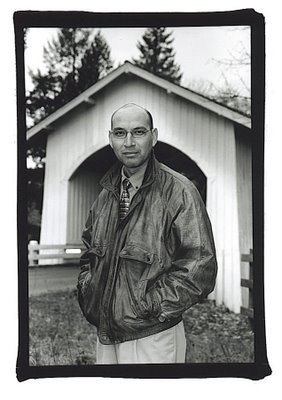#3 - Falling Down
From point A to point B: our economy and society relies on efficient and safe transportation networks. But when this freedom of movement is impeded, the result is chaos and often a major news story--particularly if the problem occurs in a vast metropolitan area and on the same stretch of roadway, twice. The recent gas tanker explosion and fiery destruction of the Bay Area's Interstate 80 brought to mind the first catastrophe this freeway had endured and an equally challenging assignment I had to cover: the 1989 Loma Prieta Earthquake and the collapse of an elevated segment on the Oakland/San Francisco Bay Bridge.

When the main tremors struck, I was seated in the first base field box at Candlestick Park photographing the Giants/Athletics World Series match-up. Like a rowboat rolling over a sequence of small wakes, the sensation of the experience paled in comparison to the enormity of damage it inflicted on the region. However, once the initial excitement and momentary hoopla waned and the news-radio reports started flooding in, everyone in that ballpark realized the magnitude of this event but no one could predict its impact on all of our lives for the months and even years ahead. But for me, and practically every wire service photographer in Northern California, the immediate future was certain--48 sleepless hours of earthquake devastation coverage awaited us.
On the second day of this assignment, the collapse of a Bay Bridge section and the resulting commuter nightmare it caused became the focus of the story and arrangements were made for aerial photos of this hotspot. Considering the cost of a charter helicopter and the tightly restricted airspace around the area, I prepared for any eventuality packing a 600mm lens plus a 1.4 and 2X extender. (Note: as a point of reference, most aerial photography is done at an altitude of 1000 feet where a 70 to 105mm lens, depending on the subject, is more than sufficient). Long story short, my preparations paid off for as we hovered over the site and I struggled to identify it(through the haze and distance we were allowed to fly-over), the ultra-long glass and accessories became a necessity and this transmitted photo was taken with nearly an 800mm focal length lens!
The lesson here is simple: when bridges are falling down and aerial photos are the first or only option, prepare for the worst and your results will be the best.

When the main tremors struck, I was seated in the first base field box at Candlestick Park photographing the Giants/Athletics World Series match-up. Like a rowboat rolling over a sequence of small wakes, the sensation of the experience paled in comparison to the enormity of damage it inflicted on the region. However, once the initial excitement and momentary hoopla waned and the news-radio reports started flooding in, everyone in that ballpark realized the magnitude of this event but no one could predict its impact on all of our lives for the months and even years ahead. But for me, and practically every wire service photographer in Northern California, the immediate future was certain--48 sleepless hours of earthquake devastation coverage awaited us.
On the second day of this assignment, the collapse of a Bay Bridge section and the resulting commuter nightmare it caused became the focus of the story and arrangements were made for aerial photos of this hotspot. Considering the cost of a charter helicopter and the tightly restricted airspace around the area, I prepared for any eventuality packing a 600mm lens plus a 1.4 and 2X extender. (Note: as a point of reference, most aerial photography is done at an altitude of 1000 feet where a 70 to 105mm lens, depending on the subject, is more than sufficient). Long story short, my preparations paid off for as we hovered over the site and I struggled to identify it(through the haze and distance we were allowed to fly-over), the ultra-long glass and accessories became a necessity and this transmitted photo was taken with nearly an 800mm focal length lens!
The lesson here is simple: when bridges are falling down and aerial photos are the first or only option, prepare for the worst and your results will be the best.


0 Comments:
Post a Comment
<< Home